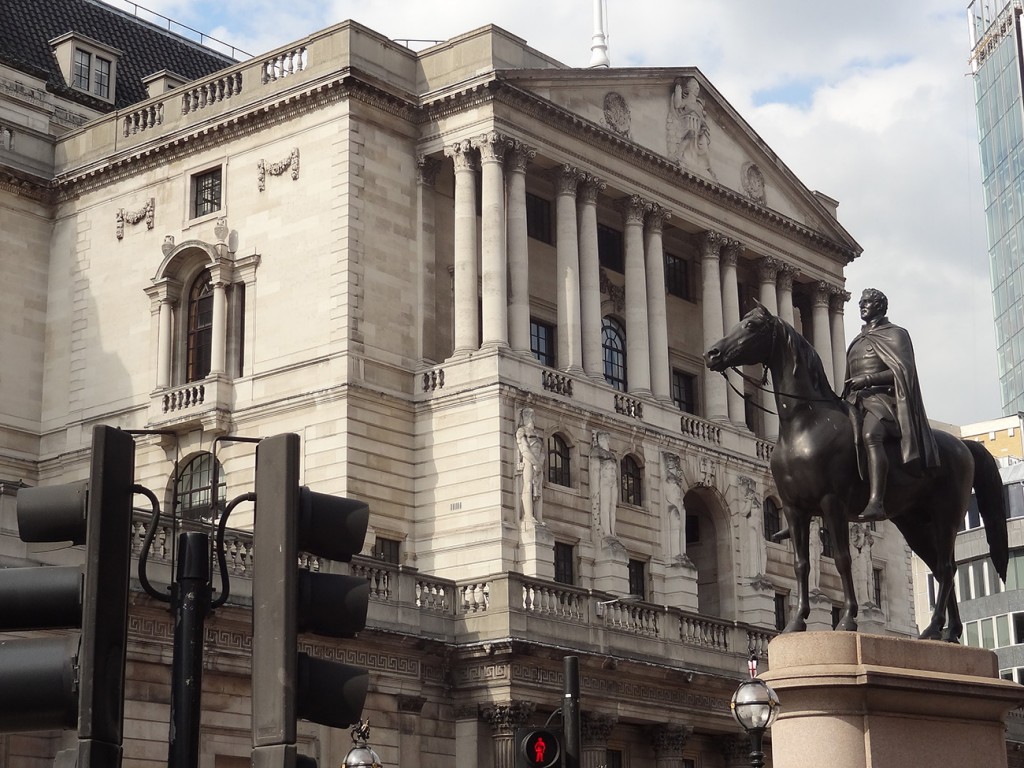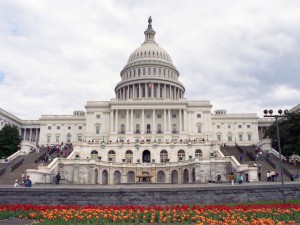 Should the object of monetary policy be simply one of keeping inflation within a target range? In a speech given on 9 October, the Governor of the Bank of England, Sir Mervyn King, questioned whether the interest-rate setting policy of the Monetary Policy Committee (MPC) has been too narrow.
Should the object of monetary policy be simply one of keeping inflation within a target range? In a speech given on 9 October, the Governor of the Bank of England, Sir Mervyn King, questioned whether the interest-rate setting policy of the Monetary Policy Committee (MPC) has been too narrow.
He considered whether interest rates should have been higher before the financial crisis and crash of 2007–9. This could have helped to reduce the asset price bubble and discouraged people from taking out excessive loans.
But then there is the question of the exchange rate. Would higher interest rates have pushed the exchange rate even higher, with damaging effects on exports? Today the trade weighted exchange rate is some 20% lower than before the crash. The government hopes that this will encourage a growth in exports and help to fuel recovery in demand. But as Dr King said, “The strategy of reducing domestic spending and relying more on external demand is facing a real problem because not everyone can do it at the same time.”
 Then there is the question of economic growth. Should a target rate of growth be part of the MPC’s target? Should the MPC adopt a form of Taylor rule which targets a weighted average of the inflation rate and the rate of economic growth?
Then there is the question of economic growth. Should a target rate of growth be part of the MPC’s target? Should the MPC adopt a form of Taylor rule which targets a weighted average of the inflation rate and the rate of economic growth?
Certainly monetary policy today in the UK and many other countries is very different from five years ago. With interest rates being close to zero, there is little scope for further reductions; after all, nominal rates cannot fall below zero, otherwise people would be paid for borrowing money! So the focus has shifted to the supply of money. Several attempts have been made to control the money supply through programmes of quantitative easing. Indeed many economists expect further rounds of quantitative easing in the coming months unless there is a substantial pick up in aggregate demand.
So what should be the targets of monetary policy? The following articles look at Dr King’s speech and at various alternatives to a simple inflation target.
Articles
Mervyn King says must face up to monetary policy’s limits’ Reuters, David Milliken and Sven Egenter (9/10/12)
Bank of England’s Mervyn King defends low interest rates pre-crisis The Telegraph, Emma Rowley (9/10/12)
Banks should have had a leverage cap before crash, says Mervyn King The Guardian, Heather Stewart and Phillip Inman (9/10/12)
King Says BOE Must Keep Targeting Inflation as Tool Revamp Looms Bloomberg, Scott Hamilton and Svenja O’Donnell (9/10/12)
After 20 years, time to change Merv’s medicine? Channel 4 News blogs, Faisal Silam (9/10/12)
King signals inflation not primary focus Financial Times, Norma Cohen and Sarah O’Connor (9/10/12)
Should Bank start the helicopter? BBC News, Stephanie Flanders (12/10/12)
Speech
Twenty years of inflation targeting Bank of England speeches, Mervyn King (9/10/12)
Questions
- What are the arguments for using monetary policy to target a particular rate of inflation?
- Would it ever be a good idea to adjust the targeted rate of inflation up or down and if so when and why?
- Explain how a Taylor rule would work and in what ways it is superior or inferior to pursuing a simple inflation target.
- Are attempts to control the money supply through quantitative easing (or tightening) consistent or inconsistent with pursuing an inflation target? Explain.
- What are the arguments for and against abandoning targeting in monetary policy and replacing it with discretionary policy that takes a number of different macroeconomic indicators into account?
 The US Federal Reserve bank has launched a third round of quantitative easing, dubbed QE3. The hope is that the resulting growth in money supply will stimulate spending and thereby increase growth and employment.
The US Federal Reserve bank has launched a third round of quantitative easing, dubbed QE3. The hope is that the resulting growth in money supply will stimulate spending and thereby increase growth and employment.
Ben Bernanke, the Fed Chairman, had already said that the stagnation of the labour market is of grave concern because of “the enormous suffering and waste of human talent it entails, but also because persistently high levels of unemployment will wreak structural damage on our economy that could last for many years”. Not, surprisingly, the markets were expecting strong action – and that is what they got.

Under QE3, the Fed will buy mortgage-backed securities of $40bn per month. And this will go on for as long as it takes for the employment market to show significant improvement. It is this open-ended commitment which makes QE3 different from QE1 and QE2. Under these earlier rounds of quantitative easing, the Fed purchased a fixed amount of assets – $2.3tn of bonds.
QE3 also comes on top of a policy in operation since September 2011 of buying long-term government bonds in the market and selling shorter-dated ones. This ‘funding’ operation is known as ‘Operation Twist’.
The markets responded favourably to the announcement of QE3, especially to the fact that its size and duration would depend on the state of the real economy. Nevertheless, there are real questions about its likely effectiveness. The most important is whether the increase in narrow money will translate into an increase in borrowing and spending and hence an increase in broad money; or whether the rise in narrow money will be offset by a fall in the velocity of circulation as banks seek to increase their liquidity ratios and to recapitalise.
The following articles look at the details of QE3 and whether it is likely to achieve its desired result. Will the Fed be forced to raise asset purchases above $40bn per month or to introduce other measures?
Articles
Federal Reserve to buy more debt to boost US economy BBC News (14/9/12)
Bernanke takes plunge with QE3 Financial Times, Robin Harding (14/9/12)
US monetary policy at an important turning point Financial Times, Gavyn Davies (2/9/12)
Cliffhanger The Economist (22/9/12)
Your flexible Fed BBC News, Stephanie Flanders (13/9/12)
Back Ben Bernanke’s QE3 with a clothes peg on your nose The Telegraph, Ambrose Evans-Pritchard (23/9/12)
QE3 Stimulus from Federal Reserve Drives Mortgage Rates Down to Record Lows TellMeNews, Sharon Wagner (24/9/12)
Helicopter Ben Bernanke: The Problem With QE1, QE2, QE3 and QE Infinity TellMeNews, Martin Hutchinson (18/9/12)
QE: More bang than buck Business Spectator, Stephen Grenville (18/9/12)
QE3: What it Really Means PBS NewsHour, Paul Solman (20/9/12)
US Data
US Money Stock Measures Federal Reserve Statistical Release
Data Releases Board of Governors of the Federal Reserve System
Civilian Unemployment Rate (UNRATE) FRED Economic Data
Questions
- What distinguishes the Fed’s QE3 from its QE1 and 2?
- What will determine the likely success of QE3 in stimulating the real economy?
- Why has there been a huge surge in liquidity preference in the USA? What would have been the impact of this without QE1 and QE2?
- Explain what is meant by ‘portfolio balance effects’ and how significant are these in determining the success of quantitative easing?
- Does QE3 suggest that the Fed is pursuing a type of Taylor Rule?
- Why might QE3 be a “pro-cyclical” blunder?
- To what extent would monetarists approve of the Fed’s policies on QE?
- How is QE3 likely to affect the dollar exchange rate and what implications will this have for countries trading with the USA?
This podcast is from the Library of Economics and Liberty’s EconTalk site. In it, Scott Sumner of Bentley University discusses with host Russ Roberts the role of monetary policy in the USA since 2007 and whether or not it was as expansionary as many people think.
In fact, Sumner argues that monetary policy was tight in late 2008 and that this precipitated the recession. He argues that the standard indicators of the tightness or ease of monetary policy, namely the rate of interest and the growth in the money supply, were misleading.
 Sumner on Monetary Policy EconTalk podcast (9/11/09)
Sumner on Monetary Policy EconTalk podcast (9/11/09)
Questions
- Why is it important to look at the velocity of circulation of money when deciding the effect of interest rate changes or changes in the monetary base? Can the Fed’s failure to take velocity sufficiently into account be seen as a cause of the recession?
- Is there evidence of a liquidity trap operating in the USA in late 2008?
- How could the Fed have pursued a more expansionary policy, given that interest rates were eventually cut to virtually zero and the monetary base was expanded substantially?
- Why does Sumner argue that monetary policy should focus on influencing the growth in aggregate demand?
- How useful is the quantity equation, MV = PT (or MV = PY) in understanding the role and effectiveness of monetary policy?
- What is the Keynesian approach to monetary policy in a recession? How does this differ from the monetarist approach? Are both approaches focusing on the demand side and thus quite different from supply-side analysis of recession?
- Why is the consumer prices index (CPI) a poor indicator of a nominal shock to the economy? Should the central bank focus on nominal GDP, rather than CPI, as an indicator of the state of the economy and as a guide to the stance of monetary policy?
- What are the strengths and weaknesses of using a Taylor rule as a guide to monetary policy? Would nominal GDP futures be a better target for monetary policy?
 Should the object of monetary policy be simply one of keeping inflation within a target range? In a speech given on 9 October, the Governor of the Bank of England, Sir Mervyn King, questioned whether the interest-rate setting policy of the Monetary Policy Committee (MPC) has been too narrow.
Should the object of monetary policy be simply one of keeping inflation within a target range? In a speech given on 9 October, the Governor of the Bank of England, Sir Mervyn King, questioned whether the interest-rate setting policy of the Monetary Policy Committee (MPC) has been too narrow. Then there is the question of economic growth. Should a target rate of growth be part of the MPC’s target? Should the MPC adopt a form of Taylor rule which targets a weighted average of the inflation rate and the rate of economic growth?
Then there is the question of economic growth. Should a target rate of growth be part of the MPC’s target? Should the MPC adopt a form of Taylor rule which targets a weighted average of the inflation rate and the rate of economic growth?

